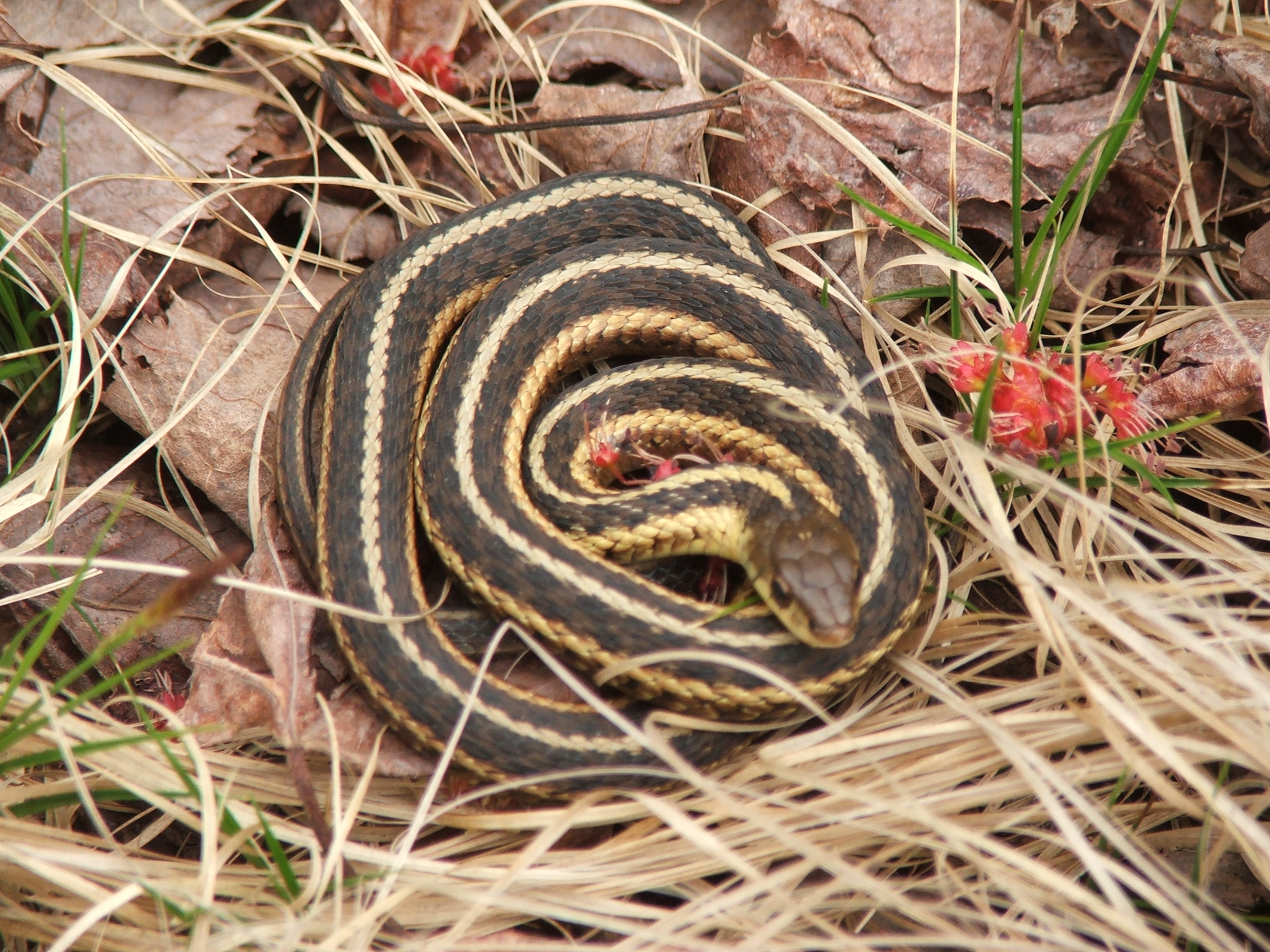- Butler's Garter Snake
Taxobox
name = Butler's Garter Snake

image_caption = Ninigret national Reservation - Rhode island
image_width = 250px
status = LC
status_system = IUCN3.1
regnum =Animal ia
phylum = Chordata
classis =Reptilia
ordo =Squamata
subordo =Serpentes
familia =Colubridae
genus = "Thamnophis "
species = "T. butleri"
binomial = "Thamnophis butleri"
binomial_authority =The Butler’s Garter Snake, "Thamnophis butleri" is a medium sized (averaging lengths of 15-20 inches), slender snake with three yellow to orange stripes along the length of the body. The background color can range from brown, black or olive and it may also be possible to discern two rows of dark spots between the side and back stripes. These features do little to distinguish them from most other garter snakes species, but what is unique to this species is the placement of the lateral, or side, stripes. In Butler's Garter Snakes, the lateral stripes are centered on the third scale row up from the ventral scales, and they also overlap the adjacent second and fourth scale rows. This contrasts the lateral stripe placement of other garter snake species. For those hoping to avoid getting close enough to inspect the position of the lateral stripe, there are other features which may help in their identification! The head is unusually small for a garter snake, and, when excited, the effort this snake expends to escape seems to go more towards thrashing in place than to getting away.
Ecology
Butler’s Garter Snakes inhabit moist, grassy, open canopy areas, such as meadows, wet prairies, marshes, savanna and grasslands. Like the
Kirtland's Snake , they may also be found in grassy vacant lots in suburban and residential areas. The species can often be found under rocks, logs, trash and boards. Butler’s Garter Snakes subsist on a diet of mainly earthworms, but they may also eat leeches, salamanders and frogs. The species hibernates communally, often with other garter snake species. Butler's Garter Snakes are a relatively short-lived species and they reach sexual maturity in their second spring. The species is also ovoviviparous.References
* [http://herpcenter.ipfw.edu/index.htm?http://herpcenter.ipfw.edu/outreach/accounts/reptiles/snakes/W_ribbon_snake/index.htm&2 Center for Reptile and Amphibian Conservation and Management - Indiana-Purdue University]
* [http://animaldiversity.ummz.umich.edu/site/accounts/information/Thamnophis_butleri.html Butler's Garter Snake] at "Animal Diversity Web"
Wikimedia Foundation. 2010.
